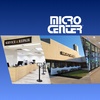World-renowned architect Hans Hollein discussed his work--including a potential new building in Harvard Square--yesterday in front of an audience interested in his latest project.
After designing acclaimed structures in Vienna, New York, Frankfurt and Lima, the Pritzker Prize winner will soon take his talent to yet another challenging environment--Cambridge.
In his Boylston Hall lecture, Hollein told the Harvard Square community to expect a new type of design at 90 Mt. Auburn St, a site owned by Harvard's Planning and Real Estate (HPRE) division.
Hollein, working with local architects, will propose a building that will be constructed in the space formerly occupied by the University Typewriter and Computer Company--which HPRE recently arranged to be relocated to 52-B JFK St.
Construction on the new structure, intended to hold shops and offices, will begin in 2001 or 2002.
HPRE selected Hollein from a talented field of potential designers, according to Kathy Spiegelman, Harvard associate vice-president and head of HPRE. Even without a design in hand, Spiegelman said she is confident of Hollein's abilities.
"We were particularly interested in his breadth of work," she explained. Currently, Hollein is also designing the Austrian Embassy in Berlin and serves as the dean of the Academy of Fine Arts in Vienna.
Last night, the architect told an audience of about 80 that he particularly prizes his ability to use "age-old material in a contemporary manner."
Hollein grew up among the baroque structures and medieval cathedrals of Vienna and says that as a young boy, he was "always concerned with art, especially fine arts."
But he described himself as a contemporary architect, and said one of his challenges will be to incorporate his favorite abstract shapes into Harvard's buildings, many of which rely on a conservative Georgian design.
Hollein said creating a possible addition to the mosaic of Cambridge real estate will be a delicate project, in spite of his experience.
"The question is how to integrate the building into an area of tension," he said.
"I am honored to work on these important historical grounds," Hollein said.
"Most of my projects are connected with a very specific task and a very specific situation," he said.
Hollein's courage in approaching unique situations is a corollary of his premise that "everything is architecture."
He gave as an example the task of designing the Museum of Modern Art in Frankfurt. The Museum was planned for a tight triangular space close to a cathedral. Hollein envisioned the cathedral as a "ship," and created an edifice resembling a "ship" traveling in the opposite direction.
His other creations include the Bilbao Guggenheim Museum and the Feigen Gallery in New York.
In 1985, Hollein received the Pritzker Prize, the highest honor attainable in the field of architecture.
Read more in News
Made of Dough?Recommended Articles
-
Harvard Treats Tenants UnfairlyAs a major landholder in Cambridge, Harvard Planning and Real Estate (HPRE) is responsible for much of the financial dealings
-
University, Cambridge Agree on Housing PlanThe Cambridge City Council agreed last night to support Harvard's plan to sell about a quarter of its formerly rent-controlled
-
HPRE Advocates 'Market Increase' For University-Owned HousingResidents of the 2,300 Harvard affiliated apartments surrounding campus may see an increase in their rent this summer. Harvard Planning
-
Memorial Church Bell Silent After Winds Cause DamageTo the chagrin of University officials and the glee of many Canaday Hall residents, a 100-pound piece of the Memorial
-
Harvard Pro., Skewers to Close, $6 Million Building to Be Developed on SiteTwo of Harvard Square's most beloved small businesses will soon be forced to relocate, according to officials from Harvard Planning
-
Building Proposal Reviewed by CityA proposed University building on Mt. Auburn Street--compared by some to the Carpenter Center because of its unconventional design--entered the













